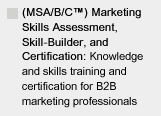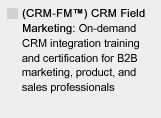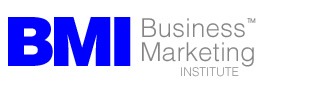MAKE SURE YOU CONTINUE TO RECEIVE EACH ISSUE OF TUESDAY MARKETING NOTES—CLICK HERE TO RENEW YOUR FREE SUBSCRIPTION (IF YOU'VE ALREADY SUBSCRIBED, NO NEED TO RE-SUBSCRIBE)
Turning “Paid Ads” into “Free Ads” Online and Then Using Them Offline
by Jim McBurney & Ford Kanzler
Does your Web design team, Webmaster or ad agency understand the need for strategy based on writing copy for machines first and humans second? If you have a Web project under way, look carefully at what your team has written for your title, description and keyword (HTML) tags. Even large corporations get this wrong all the time. If your Webmasters or agency creatives are graphic artists there’s a better than 50 percent chance they’ve never written good HTML tags since they’re artists, not programmers. If your Webmasters are programmers, they’ve probably written meta tags but the tags are probably not optimal, since they’re programmers—copywriters. So, do you want an artist doing your programming or an engineer writing your ads? Maybe you already have this?
First SWO, then ICM
Consider instead, first using an SEO-optimized Web design process we call Strategic Website Optimization. This careful advertising optimization process can turn your online “paid ads” (PPC) into “free ads” using SEO and strategy. After SWO is complete, you can then use your pre-tested online copy in print and other offline media using a second process we call Integrated Campaign Marketing or ICM. Taken together, the two processes start with optimizing and testing Web messaging online and then using it offline.
Select Strategic Keywords
The SWO and ICM process begin by answering and refining 7 key questions that help everyone get on the same page while “teasing out” differentiators, and keywords/key phrases for further research and testing. These are:
1. Who are you?
2. What business are you in?
3. For whom: What people do you serve?
4. What need: What are the special needs of the people you serve?
5. Against whom: With whom are you competing?
6. What's different: What makes you different from those competitors?
7. So: What unique benefit does a customer derive from your products and services?
Understand Competitors’ Keywords
Next, two types of online competitive content analyses deduce competitor positionings for both humans (page copy analysis) and machines (source code analysis). Is this cheating a little? Sure but don’t call it “cheating” just thorough competitive research! Since the World Wide Web Consortium (W3C) requires the source code for all Web pages to be publicly readable in full, copywriters can gain unfair advantage by learning how to read and interpret competitors’ HTML source. Thus, in the Web research phase of SWO, analyze your competitors’ source code in addition to their page copy. This trick is something "akin" to reading all your competitors’ marketing plans—that is of course, if you can read HTML source code. Thus SWO allows you to interpolate and derive competitor positioning with a fair degree of accuracy. You’ll discover who is selling what differentiators and also determine your competitor CMOs' degree of “SEO savvy”—by seeing what they consider to be important keywords. If you happen to run across some good ideas and borrow some, don’t worry cause it’s not stealing − since they can copyright and trademark phrases and sentences but not individual “words.”
Render Your Website
Now that you have a good idea of the keywords your competitors use (by reading their keyword tag) and with the differentiators you have “teased” out of the 7 Key Questions, you can then execute a “bottoms-up” keyword analysis, using tools such as Google’s AdWords Keyword Tool to create your "strategic keyword basket” for each “landing page.” Only after this strategic front-end work is complete should you create a Web spec and write your first HTML tags and page copy, using of course, keywords from your "strategic keyword basket.”
Optimize Online Ad Copy First
At this point we are still at the online (SWO) phase of our ICM process and haven’t said anything about writing offline copy. With our first-cut HTML tags written, the next step is writing good 4-line PPC ads and test two or three of them letting AdWords optimize your impressions to maximize clicks. This is how you learn which ads generate the best “click stream” and “conversions” while simultaneously identifying the best performing ad headlines (line 1 of the PPC text ad) and ad subheads (line 2 and 3 of the PPC ads). Also consider other Web criteria such as page views and time-on-site, since the higher these numbers, the more effective the headline/subheads are AND the more qualified the prospects are that were attracted to your site by the “paid ad.” Repeat this test for each ad “landing page” if appropriate.
Turn “Paid Ads” into “Free Ads”
Only after you learn your best headlines/subheads from the PPC ad tests, should you rewrite your Title Tags and Description Tags and render them into your HTML source. In this way, future bot visits [Googlebot, Bingbot, Yahoobot) will grab your new title and description tags and present them as lines 1-3 of the organic search results. Over time this outflanks your competitors by substantially reducing your ad expense.
Now You Can Write Offline Copy
Once your copy-tested free ads are running online, you can turn to offline copywriting and apply the identical, strategically-researched and tested online headlines and subheads to offline copy, refining and adapting them as appropriate to various media. This way you achieve truly integrated messaging and ICM, not only for humans and machines online but also for headlines and subheads and body copy across ALL online and offline media.
Integration and Iteration
This is why an integrated SWO and ICM process, integrates not only paid/unpaid man/machine search marketing, but also for online/offline integrated MarCom messaging alignment. Since a bottoms-up process is based on a competitive snapshot of your competitors’ strengths/weaknesses at a particular time, it’s recommended the process be iterated periodically, since competitors will change their positioning and reveal new strategies. We emphasize that it’s important to continually optimize for other SEO Factors and follow SEO Best Practices while you’re outsmarting the bots and gaming the SEs. It doesn’t do much good to have a free organic search result if you’re not on the first SERP, so there’s a (marketing ops) art to the timing of pulling the plug on your PPC campaign.
Did we say “Gaming the Bots and SEs”?
Certainly, but it’s 100 percent legal! As mentioned, the search bots read the title tag in your HTML source and use it for the headline (line 1) in your free ad or organic search result. Then they read your description tag and use it for the subheads (lines 2 and 3] of your free ad. If you use SWO, you can use Google software tools to write and test your own “paid ad” copy and then get the search engines to run this copy as “free ad”. So you are gaming the SEs by using their “organic search rank” formulas to show your tested “free ad” on the “first SERP” for your most important keywords. Why pay for online advertising if you can get it for free? Of course it might take some SEO investment to get it for free!
Is “Lack of Process” the Problem?
How often do agencies skip the creative brief and just jump into copywriting without adequate strategic thought? How many Web designers know to write HTML tags first? How many creative teams understand the process inter-relationships we discuss here? How many agencies share these secrets with you? How many marketers understand “new marketing” and ICM? We believe that few agencies understand that marketers can cleverly outsmart the SEs by letting their slaves (the bots) turn copy-tested paid PPC ads into “free ads" in your organic search results. This lack of awareness of marketing process is unfortunately where effective ICM and campaign integration often falls flat.
Conclusion
Copywriting has become more constrained today because it’s necessary to write for both machines and human Web site visitors by writing for machines first. Too many marketers still don't comprehend, that achieving free ads by first developing SEO optimized sites, can lead to a huge competitive advantage of low-to-no ad/sales expense long-term. Using this strategic approach to copy writing and ad testing, you can turn tested online copy into offline copy for brochures and white papers. In simple terms, let the machines guide your hand in copywriting AND help you outflank your competitors!
About the Authors
Ford Kanzler of Marketing/PR Savvy is a tech marketing pro with deep leadership experience within public relations agencies and corporations. Focusing on strategic outcomes rather than only tactics, he helps marketers by sharpening their communications with competitive differentiation. Reach him at: ford@prsavvy.com
Jim McBurney is a serial writer, and his papers and processes are found at www.strategic-reports.com. As a principal marketing consultant, Jim focuses on the customer engagement, acquisition and retention process. He specializes in creating content with competitive differentiated messaging. Reach him at: jcmcburney@strategic-reports.com







